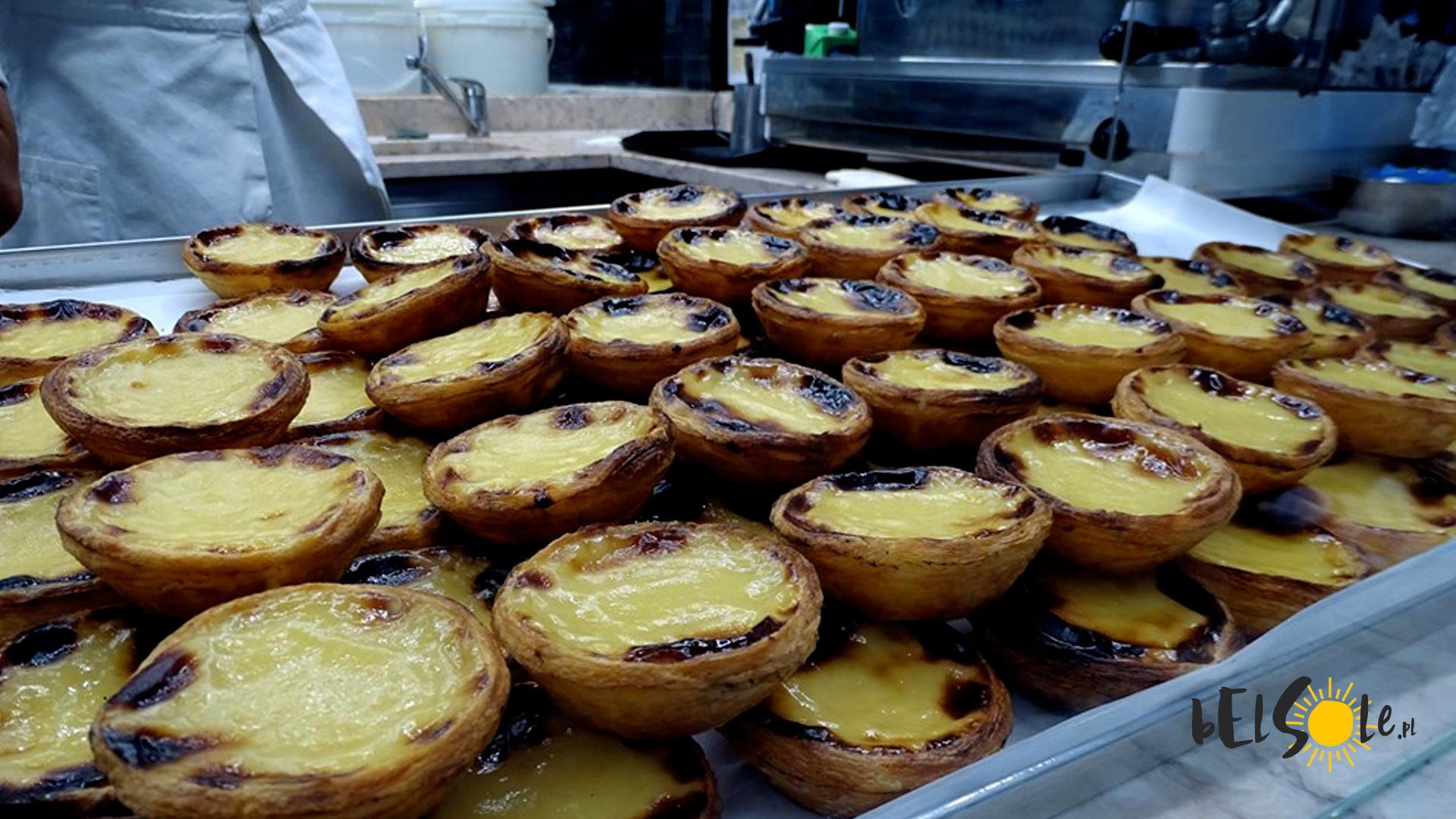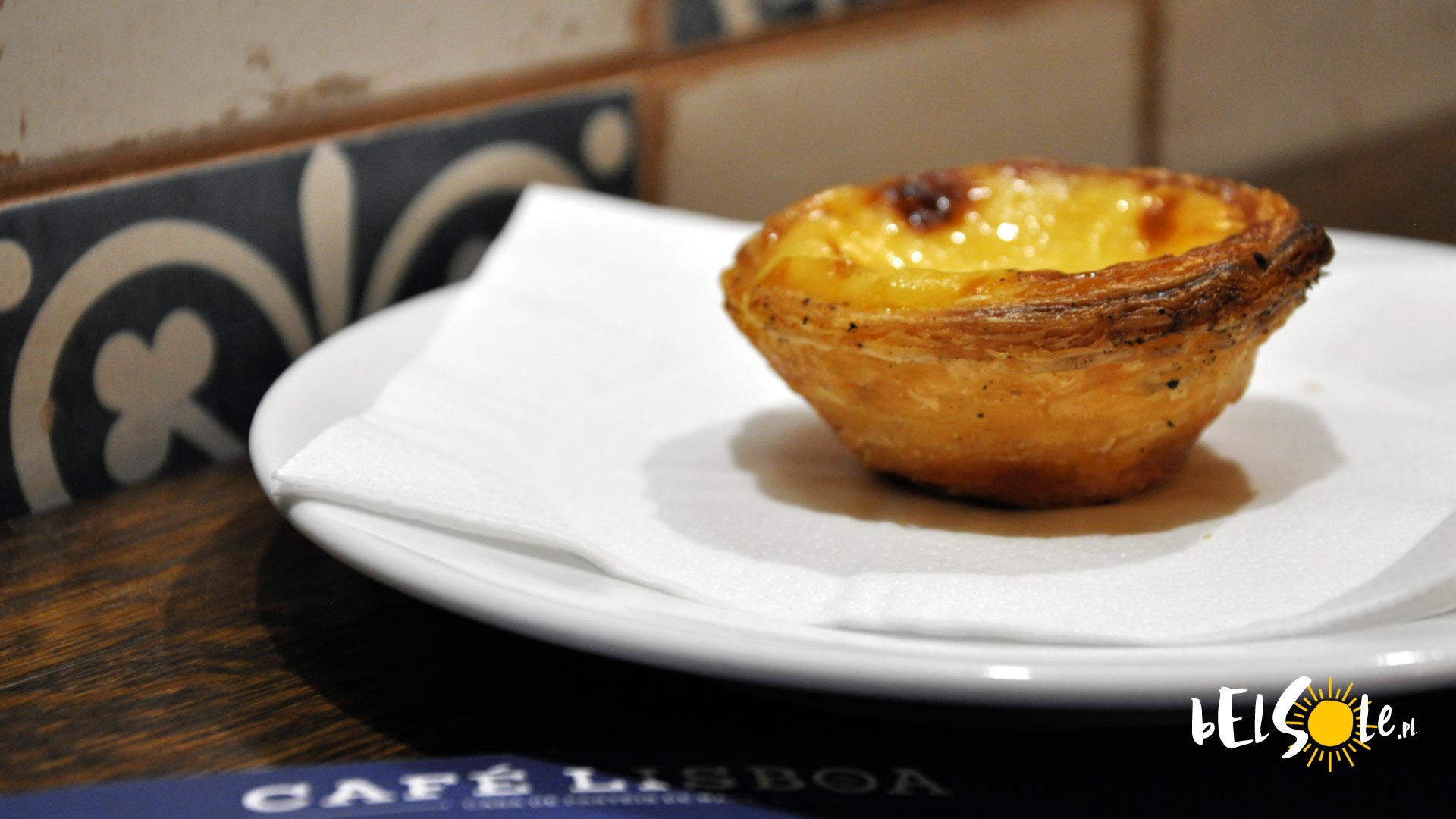The Pasteis de Nata custard tarts have become one of the many symbols of Portugal. The recipe came to be in one of the Lisbon districts – Belem, in the Hieronymites Monastery. How and when exactly was the recipe created? How much do the tarts cost and where can you buy them? Where to buy the best Pasteis de Nata in Portugal?
Pasteis de Nata – what is it?
If we were to ask a random bypasser to list the symbols of Portugal – he’d probably list Port wine for 4 pounds on a discount and Cristiano Ronaldo. If we were to ask a more experienced traveller, the answer would be a bit more excessive. Next to the Rooster of Barcelos and the azulejos, he’d probably also list the Pasteis de Nata tarts.
The traditional Portuguese cookies take the form of mini custard tarts. Pasteis De Nata consists of puff pastry filled with mostly yolk-based cream. During the baking, the cream on top of the dough becomes caramelized, which gives it the black spots on the top. The tarts are most often served with cinnamon or powdered sugar sprinkled on top, alongside a strong espresso.
Pasteis de Nata – history
To properly understand what makes Pasteis de Nata, we have to venture back to the 17th century, for it is when the monks in Belem started using egg white to starch their clothing. The leftover yolk was then used to bake cakes and cookies. Then, the recipe for Pasteis de Nata came to be, as the monks didn’t want to waste anything.
In 1820, Portugal was going through the, so called, Revoluçao Liberal, the liberal revolution. During that period, the monasteries stopped receiving funds. The creative monks came up with an idea to sell the tarts to rescue their financial situation. The tarts became quite popular, although it wasn’t enough to create a fortune. The monastery was closed in 1837. The recipe for Pasteis de Belem (named after the location) was sold to Domingos Rafael Alves, who created a small production line near the monastery. The original recipe is still being used in a cafe called Pasteis de Belem, which we’ve had the pleasure of visiting.
You can try the true, historically accurate Pasteis de Nata in Belem, at Rua de Belem 84-92. There’s a cafe, which is even appropriately called “Pasteis de Belem”. Of course, that is not the only place with the license to sell them. You can find the tarts in practically every town in Portugal.
The Pasteis de Nata tarts have gained enough popularity, to appear anywhere the Portuguese flag stands. We can try them in Macau, Brazil or even on Azores, where the tarts are referred to as Queijada de Nata. Pasteis de Nata is also popular in China, but of course the recipe changes ever so slightly in almost every place, so encountering the true Pasteis de Nata may be rarer outside of Belem.
Pasteis de nata – recipe
Finally, what you’ve been all waiting for. Pasteis de Nata can be easily prepared at home, using very basic ingredients, although the process itself can get a bit tricky. We’ll need 270 grams of flours (2 cups), 1 gram of salt, 200 ml of cold water and 225 grams of butter.
For the filling, we’ll need an additional 30 grams of flour, 300 ml of milk, 260 grams of sugar, one cinnamon and one vanilla sticks, 6 good quality yolks and 2 – 3 cups of water. To start off, we mix the flour, salt and water and form the dough. If you certainly want to prepare your own tarts, we wouldn’t advise following random guides from the web and instead, listen to the experts. We’ve been able to dig out a video clip of a proper Pasteis de Nata recipe from the Portuguese web.
Where to eat the best Pasteis de Nata?
The most popular place is obviously the aforementioned Fábrica de Pastéis de Belém, in Lisbon. While on the topic of Lisbon, there is the Manteigaria cafe and the Fabrica da Nata, at the Praça dos Restauradores 62-68. There’s also the Porto Manteigaria and the Nata Lisboa, which is present in cities like Coimbra, Porto, Nazare, Almada but also Berlin, vienna, Abu Dhabi or Bilbao. In Porto, there’s the popular Fabrica de Nata on the Rua de Santa Catarina street.
Pasteis de nata – pronunciation
Although Portugal isn’t an overly judgemental place, perhaps some of you may want to show off your perfect Portuguese pronunciation. In that case, Pasteis de Nata is most comparable to ‘pash-tei de nah-ta’ (pɐʃˈtɛɫ dɨ ˈnatɐ).







